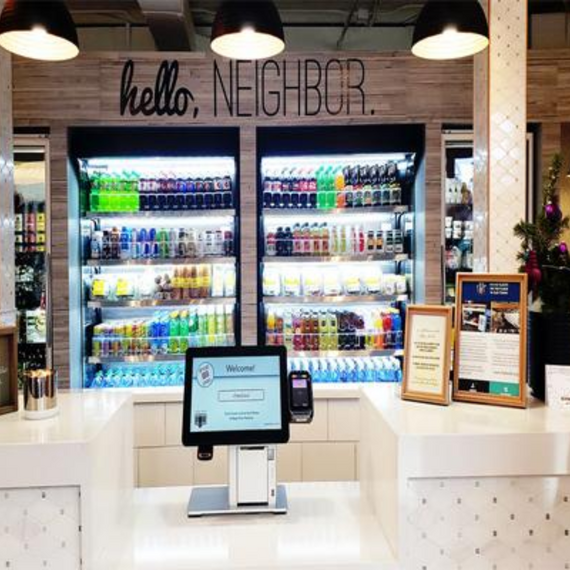
- Five minutes read
Expanding access to financial services and technology for women-owned businesses and entrepreneurs
The number of female entrepreneurs is increasing around the world, yet many women continue to face significant obstacles when starting their own businesses. Fintech providers that champion broader representation within the global SMB community are providing solutions to help level the playing field.
Micro and small businesses are the backbone of most economies worldwide. They provide products and services tailored to locals, generate new jobs, and stimulate an inflow of community resources. They also offer role models to society by integrating women into the economic mainstream.
But in many countries, women still face a wide range of challenges when starting a business, and these are often quite different from those experienced by their male counterparts. Cultural norms and societal barriers set the pace at which women become self-employed business owners. Defying social expectations, building a support network, and balancing a business with family life are some challenges they must overcome. On top of that, access to financial services and funding from investors remains a significant hurdle.
Throughout this article, we’ll assess how players in the fintech industry can help close the gender gap while shedding light on the disparities that limit entrepreneurial-minded women from gaining access to the resources needed to build a legacy of their own.
Rise of female entrepreneurship
The pandemic changed how women participate in the economy. Remote working empowered women by giving them the flexibility to juggle work and family-related responsibilities. It also allowed them the space and freedom for creativity and innovation.
Restrictions on travel and disrupted supply chains meant households had to rely on local goods and services. This encouraged enterprising women to set up micro businesses to serve their communities. Hence, female entrepreneurship is increasing around the world. A study by the World Economic Forum from 2021 indicates that almost half of the start-ups (49%) in the U.S. are formed by women, compared to 28% in 2019. This trend is mirrored in the U.K., where research shows that women are now running almost 40% of all U.K. micro businesses – up from 32% before March 2020.
Barriers to women’s access to finance
Despite the rising number of women-owned businesses, disproportionate disadvantages still exist. Men still outnumber women three to one when it comes to business ownership.
One of the primary reasons for that is the inequality in access to finance. This means the ability for an individual to access investors, financial institutions, services, and mentorship that are affordable and suitable to support a business’ stage of development. In fact, the World Economic Forum has reported that 80% of women-owned firms with credit needs are either unserved or underserved – an equivalent of a massive $1.7 trillion financing gap.
According to a 2019 study, 61% of female small business founders opted to self-fund their ventures. This means some entrepreneurs use their savings to get started, limiting their economic power. Additionally, a recent TechCrunch study of all venture funding found that female-backed ventures received just 10% of overall funding, while the remaining 90% went to male-backed ventures. As more women across the globe look to jumpstart their businesses amid the roadblocks that persist, it’s imperative to work with an experienced payments partner that understands the hurdles women face.
Further compounding this is the reality that traditional lending models often require collateral which some women lack primarily due to cultural norms and legal inequalities. Financial institutions must acknowledge the cultural norms and also work to change their perspective regarding loan approval. A survey by Inter-American Development Bank in Latin America found that women were 18% less likely to have their loans approved even though their online loan applications may have the exact wording. To avoid bias, financial institutions can consider anonymizing loan applicants’ gender and launch inclusive training programs that raise employees’ awareness of gender biases and educate loan officers on how they can work to increase their loan approval rates for women.
The power of payments to fuel female entrepreneurs
The proliferation of digital payments and the expansion of new technology can also level the playing field for women-owned businesses. That’s because transactions between customers and vendors have evolved so that solutions, such as tap-to-pay or mobile point-of-sale (POS) terminals, offer a faster and simpler way of completing a purchase. This often frees up time for small business owners to focus on memorable interactions with their clientele, enabling them to better serve the needs of their customer base and establish an enjoyable experience.
Adoption of modern solutions is not only a way for business owners to control hardware costs as newer devices are often quite affordable compared to terminals of the past, but these solutions also offer value-added services that can be significant revenue accelerators. For example, payment solutions that are integrated with cloud-based technology enable business owners to access real-time data and analytics that provide further insight into consumer payment patterns, as well as patterns around buying behavior. This ultimately empowers owners to make data-driven decisions, which can be leveraged to power loyalty programs, enhanced inventory management, and even marketing and social media campaigns that help female entrepreneurs tap into new markets and expand their customer reach.
It’s estimated that improving women’s access to financial services could unlock $330 billion in annual global revenue. Investing in women-owned businesses is imperative, whether it’s through funding or by creating critical technology that can empower future generations of female founders. The structural and cultural inequalities that are set as barriers for women must be addressed, and financial institutions, as well as payments providers, have a significant role to play.




